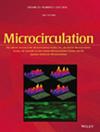Apolipoprotein M (ApoM) Ameliorates Acute Alcohol Intoxication (AAI)-Hemorrhagic Shock and Resuscitation (HSR)-Induced Microvascular Leakage
Abstract
Objective
Microvascular hyperpermeability is a serious complication that occurs from hemorrhagic shock and resuscitation (HSR), especially when combined with acute alcohol intoxication (AAI). We tested the hypothesis that administration of Apolipoprotein M (ApoM), a lipocalin that normally resides in plasma high-density lipoproteins (HDL) and a carrier of sphingosine-1-phosphate (S1P), reduces combined AAI and HSR-induced microvascular leakage.
Methods
An established rat model of AAI/HSR was combined with intravital microscopy to study whether the administration of ApoM in resuscitative fluids reduces microvascular leakage of FITC-albumin. The impact of ApoM on human umbilical vein endothelial cell (HUVEC) monolayer barrier function and junctional integrity was tested, using trans-endothelial electrical resistance (TER) and immunofluorescence labeling of junctional VE-Cadherin, respectively. Immunoprecipitation of ApoM in HUVEC and mass spectrometry of complexes were used to determine potential binding partners. The Rac1 G-LISA assay was used to determine if ApoM causes Rac1 activation in HUVEC.
Results
Compared to sham controls, combined AAI and HSR significantly increased microvascular leakage. Administration of S1P, ApoM, or their combination during resuscitation significantly decreased microvascular leakage. In HUVEC monolayers, with or without alcohol pretreatment, S1P, ApoM, and S1P + ApoM all significantly increased barrier function and improved the junctional integrity of VE-cadherin compromised by alcohol. The small GTPase Rac1 was found to bind with ApoM in HUVEC and was significantly activated within 5 min of ApoM addition.
Conclusions
The findings suggest that fluid resuscitation with ApoM ameliorates AAI/HSR-induced microvascular leakage. The mechanism involves stabilizing VE-Cadherin junction integrity, which could be caused by Rac1 activation.


 求助内容:
求助内容: 应助结果提醒方式:
应助结果提醒方式:


